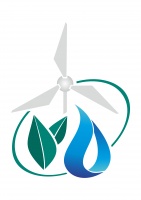Transition from territorial to hydro-graphic principle of managing the Southern Fergana Main Canal (SFMC)
| Title | Transition from territorial to hydro-graphic principle of managing the Southern Fergana Main Canal (SFMC) |
|---|---|
| Category of tools | Hydrographic boundary-based principle |
| Field of application | Use of water resources |
| Usability of practice for adaptation to climate change | Moderate |
| Implemented by | Head Water Administration Office of the Ministry of Agriculture and Water Management of the Republic of Uzbekistan (MAWM of the RUz) jointly with ICWC SIC/IWMI within the framework of the IWRM-Fergana Project |
| Used by |
Country: Uzbekistan Province: Andijan Region |
| Practice also applied in the following localities |
Fergana Region, zone of the Southern Fergana Main Canal |
| Local specifics |
Uzbekistan’s section of the Fergana Valley; the Kara Darya River Basin |
| Practice usage period |
Start date: 01.01.2001 End date: 31.12.2012 |
| Problem solved through this practice |
|
| Tools used in the practice |
The hydro-graphic principle of main trunk canal management |
| Description of the practice and its results |
Actions: Instead of 3 WMOs established based on the territorial-administrative principle, one organization (Administration of the Southern Fergana Main Canal, ASFMC) was created on the basis of the hydro-graphic principle. ASFMC is fully responsible for maintenance and operation of the SFMC from the point of water intake to the very end of the canal (see figures). Results: Transition to the hydro-graphic principle of establishing WMOs allowed to do the following:
|
| Lessons learnt and recommendations made |
Lessons learnt:
Recommendations: Transition to the hydro-graphic principle should be preceded by the following:
|
| Source of practice |
|
| Brief information on the project |
Project title: Integrated Water Resources Management in the Fergana Valley (IWRM-Fergana). Project duration: Jan 01, 2001-Dec 31, 2012 (12 years). Project goal and objectives: overall project goal was “to contribute to safer living, environmental sustainability and wide social harmony, to support rural restructuring in Central Asian countries by enhancing water resources management based on the example of the Ferghana Valley”. Project beneficiaries: water users and water consumers within the project site. Project implementer: Head Water Administration Office of the MAWM of the RUz jointly with ICWC SIC/IWMI |
| Funding source | Swiss Agency for Development and Cooperation (SDC) |
| Form submission date | 30.04.2018 |
| Print Compare with other practice |




